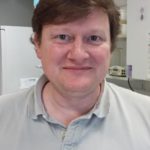Link to Pubmed [PMID] – 18782039
Med Chem 2008 Sep;4(5):426-37
The capacity of ten molecules for reversing resistance in Plasmodium falciparum in vitro to quinoline antimalarial drugs, such as chloroquine (CQ), quinine (QN), mefloquine (MQ) and monodesethylamodiaquine (MDAQ), was assessed against 27 Plasmodium falciparum isolates. Four of these compounds were 9,10-dihydroethanoanthracene derivatives (DEAs). These DEAs reversed 75 to 92% of the CQ resistant strains. These synthetic compounds were more effective in combination with CQ than verapamil, ketotifen, chlorpromazine, reserpine or nicardipine, which reversed less than 50% of the CQ resistant strains. DEAs significantly reversed 67 to 100% of MDAQ resistant parasites. These compounds were more effective in combination with MDAQ than ketotifen (60% of reversal), chlorpromazine (45%), verapamil (33%), reserpine (30%) or nicardipine (9%). The reversal activity of MQ resistance was less pronounced, regardless of the molecule tested, and was homogeneous with a rate ranging from 42% for ketotifen to 58% for reserpine, nicardipine, verapamil and cyproheptadine. The four DEAs significantly reversed 50 to 55% of the parasites resistant to MQ. Fifty-six to 78 % of the QN resistant parasites were reversed by the synthetic DEAs. There were few differences in the rate of reversal activity on QN resistant strains between the ten compounds, with rates ranging between 56 to 78% for the ten chemosensitizers. The use of DEAs in combination with quinoline seems to be thus a promising strategy for limiting the development of drug resistant strains and for treating patients in drug resistant areas.

